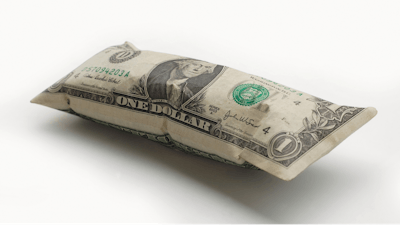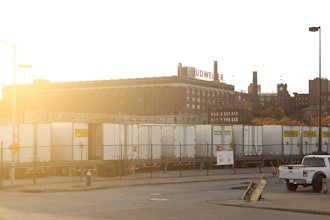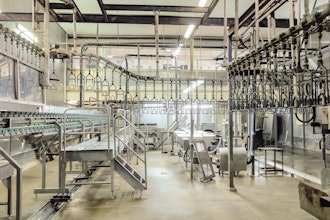
WASHINGTON (AP) — Another surge in consumer prices in September pushed inflation up 5.4% from where it was a year ago, matching the highest shift higher since 2008 as tangled global supply lines continue to create havoc.
U.S. consumer prices rose 0.4% in September from August as the costs of new cars, food, gas, and restaurant meals all jumped.
The annual increase in the consumer price index matched readings in June and July as the highest in 13 years, the Labor Department said Wednesday. Excluding the volatile food and energy categories, core inflation rose 0.2% in September and 4% compared with a year ago. Core prices hit a three-decade high of 4.5% in June.
The unexpected burst of inflation this year reflects sharply higher prices for food and energy, but also for furniture, cars, televisions, and other largely imported goods. COVID-19 has shut down factories in Asia and slowed U.S. port operations, leaving container ships anchored at sea and consumers and businesses paying more for goods that may not arrive for months.
“Price increases stemming from ongoing supply chain bottlenecks amid strong demand will keep the rate of inflation elevated, as supply/demand imbalances are only gradually resolved,” said Kathy Bostjancic, an economist at Oxford Economics, a consulting firm. “While we share the Fed’s view that this isn’t the start of an upward wage-price spiral, we look for inflation to remain persistently above 3% through mid-2022.”
The latest inflationary data makes it even more likely that the Fed will soon begin reducing its $120 billion a month in bond purchases, which are intended to keep longer-term interest rates low. Most analysts expect the Fed to announce such a move at its next meeting Nov. 3.
Higher prices are also outstripping the pay gains many workers are able to obtain from businesses, which are having to pay more to attract employees. Average hourly wages rose 4.6% in September from a year earlier, a healthy increase, but not enough to keep up with inflation.
One good sign in September was that prices fell or moderated in categories that had been initially pushed much higher by the pandemic. Those declines kept core price increases from worsening.
Used car prices declined 0.7% last month, the second straight drop, after costs soared over the summer as consumers, unable to find or afford a new car, turned to used instead.
The costs for hotel rooms, car rentals, and airline tickets also all fell last month, as the delta spike in COVID-19 cases limited travel plans. Car rental prices had shot up over the summer after many companies sold portions of their rental fleets. Clothing prices fell 1.1% in September, providing consumers some relief after increases earlier this year.
New cars, however, are growing increasingly expensive with costs rising 1.3% in September, and 8.7% compared with a year ago. That is the biggest 12-month increase in new car prices since 1980. A shortage of semiconductors has restrained vehicle production and left fewer cars on dealer lots.
Prices for household furniture, which has faced major shipping delays, jumped 2.4% in September alone, the biggest increase since 1988. Over the past 12 months, furniture costs have soared 11.2%, the most since 1951.
The cost of shoes rose 0.5% in September and have jumped 6.5% in the past year. Children's shoes are up 11.9%, a record-high gain in data that stretches back to the 1950s. Most shoes are imported and are likely caught in supply bottlenecks.
Restaurant owners are paying higher salaries to lure workers who have become elusive in the pandemic and they're paying more for food. And for the fifth consecutive month, that has led to outsized price gains, 0.5%, in September. The cost of a meal at a full-service restaurant has jumped 5.2% in the past year, an unprecedented leap for as long as records have been kept.
Gas prices jumped 1.2% last month and have soared more than 42% compared with a year ago. Electricity prices rose 0.8% in September from August.
Housing costs also rose at a strong clip, as builders say they cannot find all the parts and workers they need to build new homes as quickly as they'd like. Rents rose 0.5% in September and a measure of home prices climbed 0.4%. If sustained, those increases will put significant upward pressure on prices, as those two measures account for nearly one-third of the CPI.
Higher inflation has raised pressure on the Federal Reserve, which has pegged its benchmark interest rate at nearly zero to spur more borrowing and spending. Yet inflation is far above its target of 2%. Chair Jerome Powell has repeatedly said that the price gains should “abate” next year, bringing inflation closer to the target.
Fed Vice Chair Richard Clarida echoed that view in remarks Tuesday.
“The unwelcome surge in inflation this year, once these relative price adjustments are complete and bottlenecks have unclogged, will in the end prove to be largely transitory,” he said.
Raphael Bostic, president of the Atlanta Federal Reserve, joked Tuesday in separate remarks that “transitory” is now seen as the equivalent of a curse word at the Atlanta Fed. Bostic said that the price spikes mostly reflect the pandemic’s impact on supply chains and added they should eventually fade, but it will likely take longer than many Fed officials initially expected.
The price gains are also a vulnerability for President Joe Biden, who has been accused by Republicans for spurring inflation with his $1.9 trillion rescue package enacted in March of this year.
The White House said Wednesday that it has helped foster an agreement to keep the Port of Los Angeles open 24 hours a day, seven days a week, in an effort to ease supply bottlenecks and reduce price pressures.
Ports in Los Angeles and Long Beach, California, account for 40% of all shipping containers entering the U.S. As of Monday, there were 62 ships berthed at the two ports and 81 waiting to dock and unload, according to the Marine Exchange of Southern California.






















